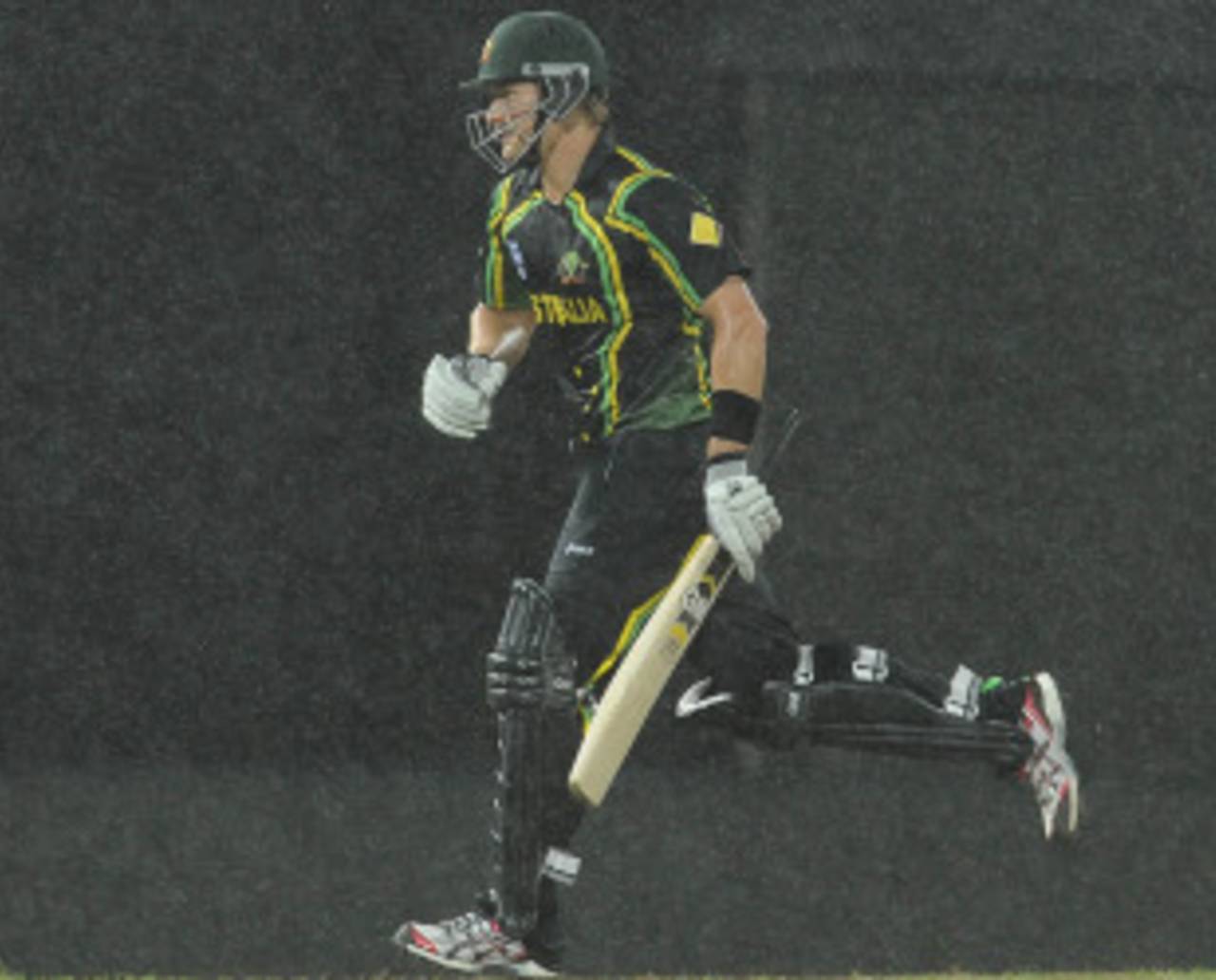Twenty20 cricket is religion to some, a leap of faith to others, and blasphemy to the rest. During this rainy season in Sri Lanka, though, those who worship at T20's altar will have their faith tested. On the best and driest of days it is argued, and not without merit, that Twenty20 is not exactly cricket. A batsman's wicket is devalued over such a short duration, and the bowler is often so marginalised that he is slave to the skill and luck of the batsman, who has lost all fear because of the devaluation of his wicket. And when Twenty20 matches are curtailed because of rain, regardless of whether it happens before or during the game, they become ridiculous affairs.
Twenty20 was a bit of a lark featuring vintage jerseys, fake moustaches and one real Afro when international cricket first embraced it, but it is serious business now - serious enough to cause diplomatic rows and for players to ditch their national sides. It is not hit and giggle anymore.
However, even 10 years and four World Cups since the inception of Twenty20, no controlling body has grasped that this format is far removed from traditional cricket, and that it needs its own grammar and its own playing conditions, especially on rainy days. The bottom line, the fact that it provides a result in three hours, is the only obsession. That we will go to ludicrous lengths - finishing a match in 60 balls - and that we haven't yet scaled Duckworth-Lewis to this format makes a mockery of what is still officially called cricket.
Two group matches of this World Twenty20 sum up what is wrong with the rain rules especially when the equilibrium between bat and ball is already stretched to within a thin strand of snapping. The first was the contest between Sri Lanka and South Africa, which was reduced to seven overs a side, the shortest pre-decided innings in limited-overs internationals. Had they moved the "match" to Stardust casino in Colombo, it would have involved less luck.
An ODI is considered a match only when the teams have played 20 overs or ended their innings, which is 40% of the original duration. A Twenty20 is considered a match as soon as the teams have played 25% of the original duration. If such reduced games are to be taken seriously, surely the wickets in hand have to come down proportionately? Limited-overs cricket without the fear of being bowled out and thus not utilising all the overs is no fun. An F5 to decide the world champions will be right ridiculous.
There is also the flawed belief that the Duckworth-Lewis method doesn't need to be adapted to 20-over games. Not many will argue that D/L is a fair system to resolve rain-interrupted ODIs, with an agreeable weightage assigned to wickets in hand. Some will argue that the rival to D/L - the VJD method, formulated by an Indian mathematician - is better, but the difference between the two is as big as split hairs.
However, it is plain to see that wickets in hand don't mean nearly as much in Twenty20 as they do in ODIs. Not, it seems, to ICC and D/L. In a
bylined article on ESPNcricinfo in September 2012, Frank Duckworth and Tony Lewis wrote, "Experience from extensive data over recent years shows that the same formula very closely fits both 50-over and T20 average totals and also other lengths of matches in between (eg: South Africa's and ECB's 40-over competitions). Consequently, the same single formula satisfactorily covers all the various formats of the limited-overs game."
Consequently, a team chasing 200 needs to be just 46 for 0 if no play is possible after five overs. In a full game, when defending 199, most fielding teams will take the opposition being 46 after five Powerplay overs, never mind the number of wickets, but that perfectly acceptable bowling effort will result in a loss if it rains. In the match that started minutes after the seven-over farce in Hambantota, Australia were declared winners after they reached 100 for 1 in 9.1 overs in pursuit of 192, because rain prevented further play. That they won is not a surprise, but that they would have tied the game even if they were 100 for 5 is. It suggests the five remaining wickets are massively overvalued.
Duckworth and Lewis are learned scientists and they have a formula that the lay follower can't comprehend or access, but it is also obvious that using the same ODI formula doesn't work for high-scoring Twenty20 games. The threat of rain looming over the later rounds of this World Twenty20 has brought into focus the shortcomings of both the minimum overs required for a result, and the method used to arrive at those results.
It needed
Sydney 1992 to happen for cricket to seriously start thinking of a proper rain rule in ODIs. It shouldn't take a farcical final in Sri Lanka for T20 to follow suit.
Sidharth Monga is an assistant editor at ESPNcricinfo
